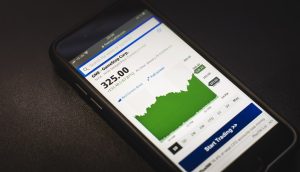Forex and CFD contracts are two of the most popular financial instruments used in trading. While both are derivatives, they differ significantly in terms of their structure, trading conditions, and underlying assets. In this article, we will provide an in-depth overview of what forex and CFD contracts are, how they work, and the key differences between them.
Forex Contracts
Forex, or foreign exchange, refers to the buying and selling of currencies. Forex trading involves taking a position on the exchange rate between two currencies. For example, if you believe that the euro will strengthen against the US dollar, you would buy the EUR/USD pair. Conversely, if you expect the euro to weaken, you would sell the pair.
Forex trading is done through currency pairs that are listed on a forex exchange. Each currency pair has a bid and an ask price. The bid price is the price at which you can sell the currency pair, while the ask price is the price at which you can buy it. The difference between the bid and ask price is known as the spread, which is the commission that the broker charges for facilitating the trade.
Forex trading is typically done using leverage, which means that you can control a large position with a relatively small amount of capital. For example, if you have $1,000 in your trading account and a leverage of 1:100, you can control a position worth $100,000. While leverage can increase your potential profits, it also magnifies your losses, so it should be used with caution.
CFD Contracts
CFD, or contract for difference, is a financial instrument that allows traders to speculate on the price movements of an underlying asset without actually owning it. CFDs are derivatives, which means that their value is derived from the price of an underlying asset, such as stocks, indices, commodities, or currencies.
CFDs can be traded on a wide range of assets, including shares, indices, commodities, and currencies. CFD trading involves taking a position on the direction of the price movement of the underlying asset. For example, if you believe that the price of gold will rise, you would buy a CFD on gold. Conversely, if you expect the price of gold to fall, you would sell a CFD on gold.
CFD trading is also done using leverage, which means that you can control a larger position with a small amount of capital. However, as with forex trading, leverage can magnify your losses, so it should be used with caution.
Key Differences Between Forex and CFD Contracts
While both forex and CFD trading are derivatives, they differ significantly in terms of their underlying assets, trading conditions, and structure. Here are some of the key differences between forex and CFD contracts:
Underlying Assets: Forex trading is focused on currency pairs, while CFD trading can be done on a wide range of underlying assets, including stocks, indices, commodities, and currencies.
Leverage: Both forex and CFD trading offer leverage, but the levels of leverage can differ significantly between brokers and asset classes.
Structure: Forex trading involves buying and selling currency pairs, while CFD trading involves taking a position on the price movement of an underlying asset.
Trading Conditions: Forex trading is done on a 24/5 basis, while CFD trading is done on a 24/7 basis. This means that CFD traders can trade around the clock, while forex traders are limited to trading during specific market hours.
Conclusion
Forex and CFD contracts are two popular financial instruments used in trading. While both are derivatives, they differ significantly in terms of their underlying assets, trading conditions, and structure. Forex trading involves buying and selling currency pairs, while CFD trading involves taking a position on the price movement of an underlying asset. Both forex and CFD trading offer leverage, but the levels of leverage can differ significantly between brokers and asset classes. Before trading either forex or CFDs, it is important to fully understand the risks involved and to choose a reputable broker that offers fair trading conditions.





